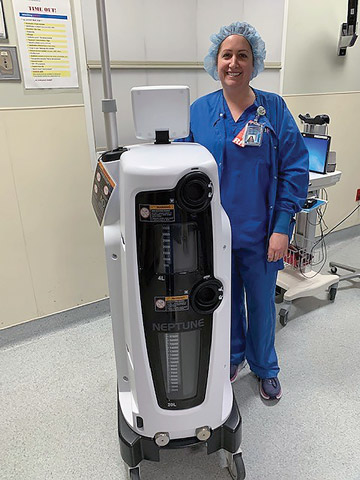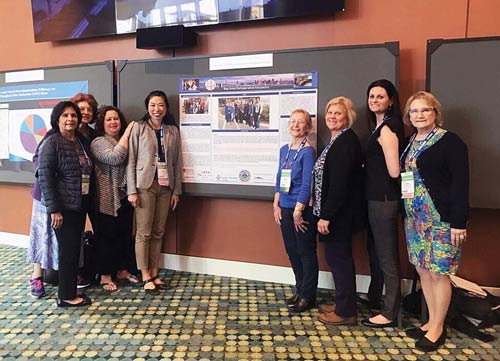Closed mobile collection units present a safer, easier alternative for managing and removing bodily liquids in ortho ORs.
 LET'S ROLL Mobile fluid collection units relieve staff of the burden of carrying heavy canisters from the OR.
LET'S ROLL Mobile fluid collection units relieve staff of the burden of carrying heavy canisters from the OR.
Arthroscopy cases are not for the faint of heart. The spilled, splattering bodily fluids they generate present safety issues not just surrounding infection control, but also the potential for slips and falls on wet floors.
Hudson Valley Center at St. Francis in Poughkeepsie, N.Y., had employed a time-consuming, aggravating and clinically distracting process for fluid collection and disposal that involved double-bagging three-liter canisters that nurses or techs then carried to dirty rooms. It was not only heavy lifting for staff, but also presented ample spillage and splashback issues. In particularly messy cases, a dozen canisters might be required, says clinical coordinator Caryn Solomon, RN.
Recently, the facility purchased closed mobile fluid waste collection systems for each of its ORs and procedure rooms, and she says the situation immediately improved. Here's why she believes closed mobile collection units are a no-muss, no-fuss, no-brainer solution for busy ortho centers:
- It saves time. The mobile systems can be rolled into and out of ORs, and positioned to collect fluids efficiently without obstructing OR staff during a case. Instead of lugging and bagging heavy fluid-filled canisters, a staffer simply rolls the device wherever it needs to go. Reduced turnover times have resulted, says Ms. Solomon.
- It's safer. The wheelable systems' internal reservoirs can hold 20 liters, taking the place of nearly seven of the old three-liter canisters that needed to be lifted and carried. When full, or at the end of a procedure, they're simply detached from arthroscopy pumps, surgical drapes or floor wicking devices, pushed to a docking station, hooked up and emptied into the sanitary sewer system. Staff never touch the fluids and simply wipe down the outside of the machine after each use.
- It's eco-friendly. Ms. Solomon says the closed systems reduce the amount of regulated medical waste generated, while eliminating thousands of single-use canisters, along with chemical red bag waste from associated solidifiers.
- It can double as a smoke evacuator. St. Francis' closed fluid collection systems also protect staff and patients from harmful surgical smoke. "Their filters are changed periodically throughout the year to help remove as many burning carcinogens in the room as possible," says Ms. Solomon.
- It's a high-value investment. St. Francis' systems cost $10,000 to $15,000 each, but Ms. Solomon says they've been worth all that and more. The facility no longer needs to purchase hundreds of three-liter cannisters and spends less on solidifying agents and red bag waste disposal. OR staff spend less time prepping, transporting and emptying fluids, and less time cleaning floors. Nurses are less aggravated because they don't need to carry heavy canisters and risk injury. Surgeons are happy about quicker turnovers. Slips and falls are much less of a worry.
It all adds up. "Our transition to closed fluid collection systems has had a positive impact on the entire OR team as well as the planet," says Ms. Solomon, "which is priceless."
.svg?sfvrsn=be606e78_3)



.svg?sfvrsn=56b2f850_5)